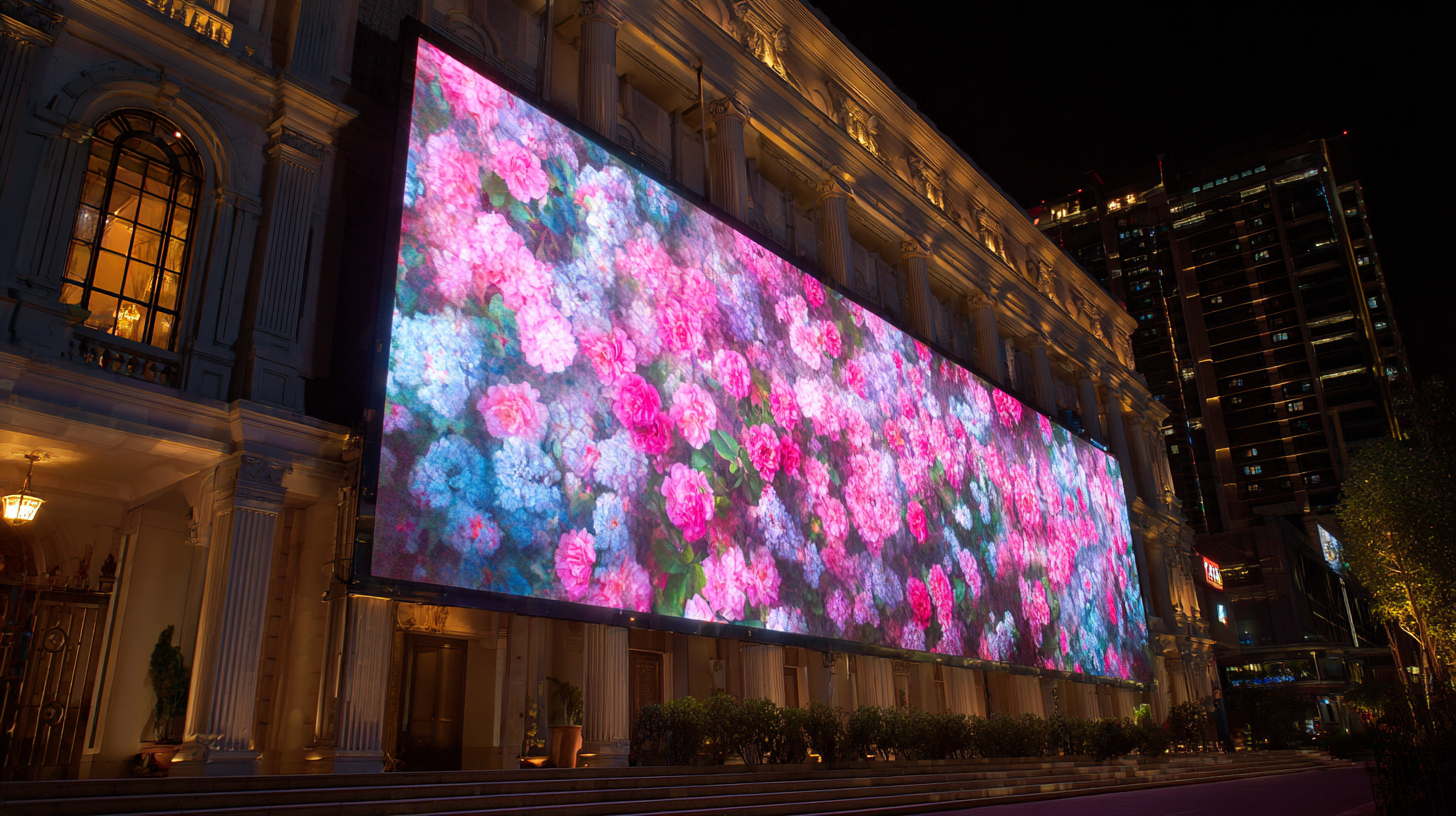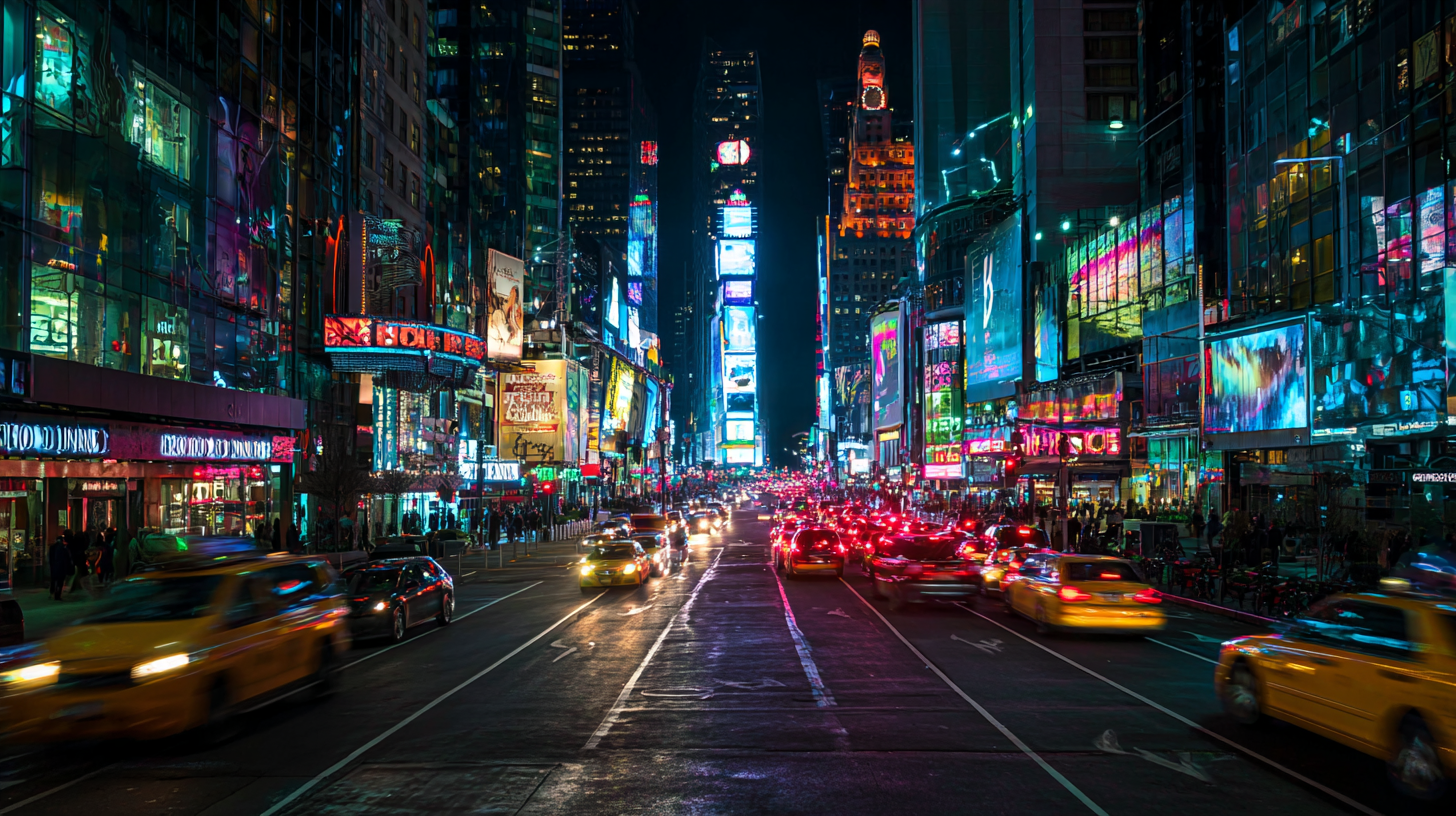
With the rapid evolution of digital marketing, the use of LED Billboard Signs has emerged as a transformative tool in advertising, providing brands with dynamic ways to engage consumers. According to a recent report by the Outdoor Advertising Association of America, digital billboards have registered a 50% increase in effectiveness compared to traditional billboards, capturing the attention of consumers more effectively in high-traffic areas.

This surge in effectiveness is further evidenced by a study from Nielsen, which found that outdoor digital advertising enhances brand recall by 47% and increases purchase intent by 33%. As advertisers harness the vibrancy and adaptability of LED Billboard Signs, they not only improve their visibility but also foster deeper consumer engagement through timely and targeted messaging. This article will explore the mechanisms by which LED Billboard Signs influence advertising effectiveness and how brands can strategically leverage this innovative medium to enhance their overall marketing impact.
LED billboard technology has significantly evolved over the past decade, transforming the landscape of modern advertising. Initially popularized for their bright, dynamic displays, LED billboards are now capable of delivering highly targeted content through advanced data analytics and audience measurement. According to a report by the Outdoor Advertising Association of America (OAAA), digital billboards accounted for 29% of all out-of-home advertising revenue in 2022, showcasing their growing importance in media strategy.
Furthermore, advancements such as real-time content updates and geolocation capabilities have enhanced the effectiveness of LED billboards. A study from Nielsen found that digital billboards can increase ad recall by up to 47%, compared to traditional static formats. This is particularly crucial in urban environments where capturing consumer attention is increasingly challenging. The integration of LED technology not only provides advertisers with more creative freedom but also allows for the immediate adaptation of campaigns based on current events or consumer behaviors, thus fostering greater engagement with the target audience.

LED billboard signs have revolutionized the landscape of advertising, providing brands with the ability to engage consumers in dynamic and visually compelling ways. These digital displays not only grab attention but also foster a measurable connection with the audience. By utilizing data-driven insights, brands can quantify the effectiveness of their LED advertising campaigns. Metrics such as viewer impressions, dwell time, and even interaction rates can be analyzed to gauge consumer engagement levels, allowing marketers to refine their strategies in real time.
As the trend towards personalization and engagement continues, the role of advanced technologies cannot be underestimated. AI and analytics tools are increasingly being integrated into advertising campaigns, enabling brands to better understand their audience's preferences and behaviors. This integration supports hyper-personalization, where messages can be tailored to various demographics as well as individual consumer interests. As data collection methods become more sophisticated, brands can create campaigns that resonate more profoundly with their target audiences, ultimately driving engagement and ROI in an increasingly competitive market.
| Campaign Location | Impressions | Clicks | Click-Through Rate (%) | Consumer Engagement Score | Conversion Rate (%) |
|---|---|---|---|---|---|
| Downtown Area | 500,000 | 5,000 | 1.00 | 75 | 2.5 |
| Shopping Mall | 300,000 | 4,000 | 1.33 | 68 | 3.0 |
| Highway Exit | 800,000 | 8,000 | 1.00 | 80 | 2.8 |
| Sports Stadium | 250,000 | 3,500 | 1.40 | 70 | 4.5 |
| University Campus | 600,000 | 7,000 | 1.17 | 76 | 3.2 |
The rise of LED billboard signs has revolutionized the advertising landscape, presenting a stark contrast to traditional advertising methods. Traditional billboards often rely on static images and text, which may lose their effectiveness over time as viewers become accustomed to them. In contrast, LED billboards offer dynamic content that can be updated in real-time, capturing consumer attention with vibrant colors and motion. This innovative format allows advertisers to tailor their messages based on time of day, audience demographics, or even current events, significantly enhancing engagement levels.
Furthermore, the comparative analysis reveals that LED billboards reach a broader audience compared to their traditional counterparts. With strategic placements in high-traffic areas, these digital displays ensure maximum visibility, reinforcing brand messages effectively. Research indicates that LED billboards can generate higher recall rates among consumers. As a result, businesses reporting their experiences with LED advertising often cite increased foot traffic and improved sales, demonstrating that the flexibility and interactivity of LED technology offer distinct advantages in today’s fast-paced advertising environment.
Dynamic visuals, such as those presented on LED billboard signs, play a crucial role in capturing consumer attention and influencing behavior. The psychological impact of moving images and vibrant colors can evoke emotional responses that static ads often fail to achieve. This heightened engagement is rooted in the brain's processing of visual stimuli; consumers are more likely to remember and react to advertisements that are visually appealing and dynamic. As a result, brands utilizing LED billboards can foster stronger connections with potential customers through immediate psychological engagement, leading to increased brand recall.
Moreover, the ability of dynamic visuals to create narratives or tell stories enhances their effectiveness in advertising. When consumers are presented with engaging storylines, they are not only more likely to remember the brand but also to associate positive emotions with it. This storytelling aspect, delivered in a visually stimulating manner, encourages deeper cognitive processing, making advertisements more memorable. In an era where consumers are bombarded with information and distractions, leveraging the psychological effects of dynamic visuals through LED billboards represents a strategic advantage for brands aiming to elevate their advertising impact and foster enduring consumer relationships.
LED billboard advertising has emerged as a transformative force in the marketing landscape, reshaping how brands engage with consumers. According to a report from the Outdoor Advertising Association of America (OAAA), digital billboards can increase brand recall by up to 47% compared to traditional static billboards. This elevated recall is partly due to the dynamic nature of LED displays, which allow for eye-catching animations and timely content updates, capturing the attention of consumers in real-time. As brands continue to leverage this technology, the interactivity of LED billboards is fostering deeper connections with audiences, leading to heightened consumer engagement.

Recent industry trends indicate a growing preference for LED billboard advertising among marketers, with a projected compound annual growth rate (CAGR) of 10.6% from 2021 to 2026, as reported by MarketsandMarkets. Marketers are increasingly integrating LED signage into their multi-channel campaigns, utilizing data analytics to tailor messages and optimize placement in high-traffic areas. This strategic approach not only enhances visibility but also allows for precise targeting, as advertisers can adjust content based on the time of day and audience demographics. As LED billboard advertising continues to evolve, its ability to convey timely and relevant messages positions it as a cornerstone of future marketing strategies.





